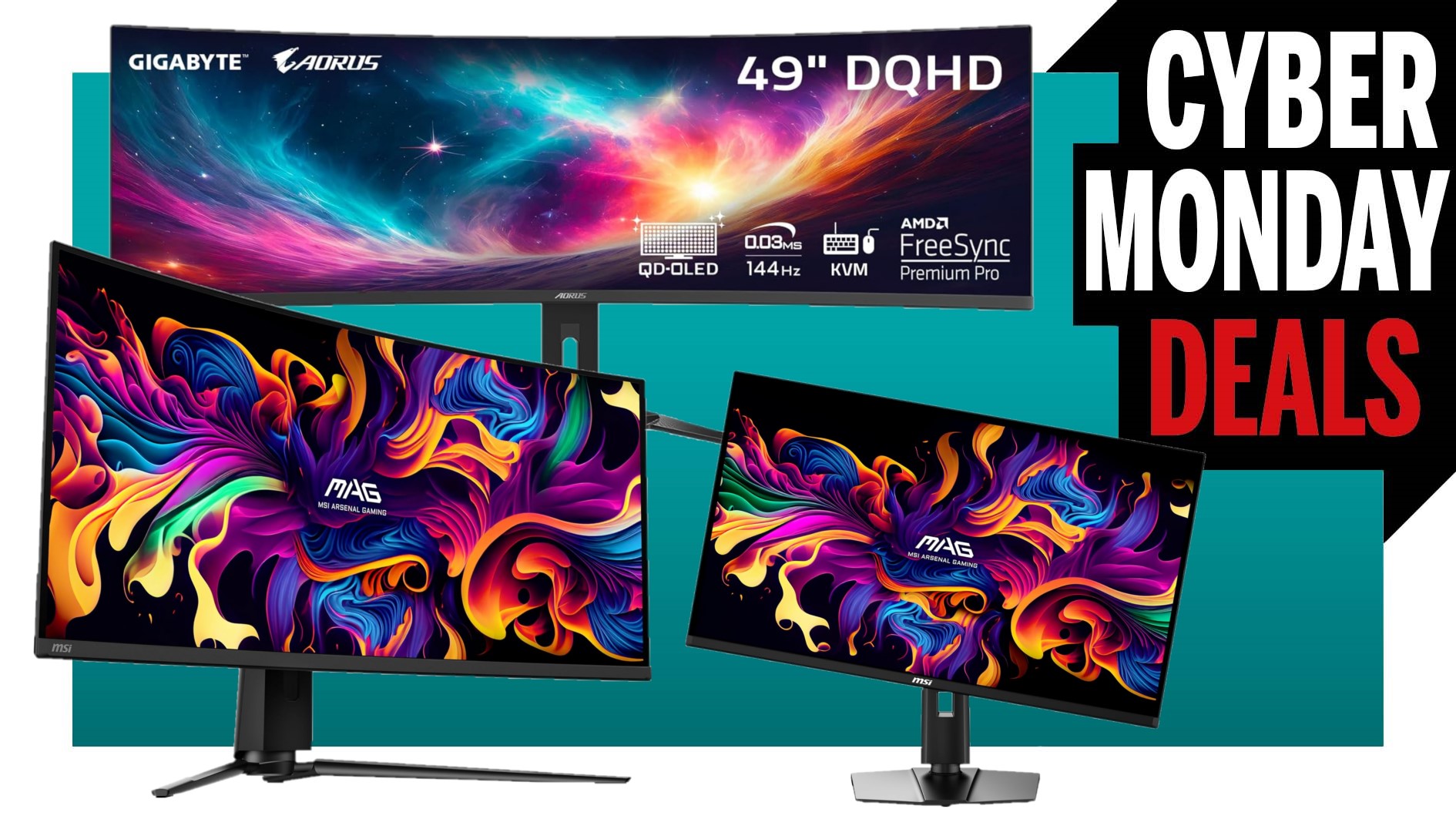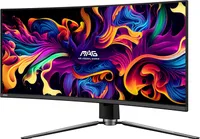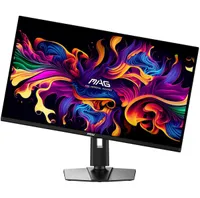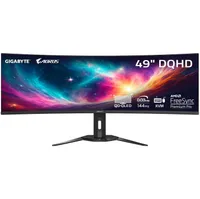I've reviewed pretty much every OLED gaming monitor known to humankind and these are by far my favourite Cyber Monday OLED deals
Size matters, or should that be resolution or aspect ratio?

Update December 1: As of Cyber Monday, somehow all of my favourite monitor deals are still available. All information has been checked for accuracy.
The problem with OLED display technology is that it's very hard to go back to almost any LCD display once you've tried it. Well, that's not the only problem, the other obvious issue is pricing. Which is where these Black Friday OLED gaming monitor deals come in. They make OLED panels just that little bit more attainable.
And you might just be surprised at how affordable these OLED deals are. Well, relative to the painfully high prices that early OLED gaming panels commanded.
👉 We're curating the best Cyber Monday PC gaming deals right here 👈
The fun starts at $576, which gets you into a 34-inch ultrawide model. You can upgrade to the full 32-inch 4K experience for $700. Even one of those 49-inch 32:9 aspect monsters now comes in at $900.
Okay, none of those remotely qualify as budget-orientated. But in some cases, that's getting one for half the price you would have paid for a similar monitor about 18 months ago or so.
As for me, I'm genuinely torn. The 34-inch ultrawide form factor is certainly something of a sweet spot. But then the 4K 32-inch option gives you much better pixel density and the 49-inch alternative is just such an immersive monster.
I really can't decide!
Quick links
- MSI MAG 341CQP | $576 @ Amazon
- MSI MAG 321UP | $700 @ Amazon
- Gigabyte Aorus CO49DQ | $900 @ Amazon
MSI MAG 341CQP
Price watch: ➖
MSI MAG 341CQP | 34-inch | 3440 x 1440 | 175 Hz | QD-OLED | Curved | $779.99 $575.99 at Amazon (save $204)
OLED gaming still isn't as affordable as we'd like. But it's getting there. This 34-inch ultrawide QD-OLED beast is still a good deal at this price, however. The 175 Hz refresh is a tiny bit pedestrian, but it's plenty fast enough for us and, in all other regards, this is the full OLED experience, including 0.03 ms response time and serious HDR sizzle.
Price check: Newegg $599.99
The 34-inch ultrawide really is a great compromise. For gaming, it's big enough for proper immersion. Likewise, the 3,440 by 1,440 native res gives good image detail without the debilitating GPU load of full 4K.
Back on the desktop, the 21:9 aspect is just fabulous for multitasking. The only downside is the somewhat mediocre pixel density. Of course, what you do get is that incredible OLED experience with perfect per-pixel lighting and preposterously fast response times.
What's more, this MSI MAG 341CQP has a Samsung QD-OLED panel, which means full-screen SDR brightness is decent. So this panel doesn't just serve up a sizzling HDR experience. It's a good all-rounder.
At this price point, the refresh rate is a 'mere' 175 Hz. But I'm absolutely fine with that, I'm not buying this monitor for esports. For that remit, there are certainly better choices. For me? This thing for sub-$600 looks pretty sweet.
MSI MAG 321UP
Price watch: ➖
MSI MAG 321UP | 32-inch | 4K | 165 Hz | QD-OLED | $829.99 $699.99 at Amazon (save $130)
What a difference a letter makes... especially when it comes to gaming monitors. The code names given to monitors are often impenetrable, but the difference between this MAG 321UP and the MAG321UPX is that this one has a 165 Hz refresh instead of 240 Hz. That's the only difference between this and the more expensive one. If you're not concerned about the refresh rate difference (and do you have the hardware to hit a matching 240 fps otherwise?) then this is where the smart OLED money is spent.
Price check: Newegg $699.99
The first 4K OLED gaming panels were well over $1,000. But this MSI is now clocking in at a whisker under $700. That's some haircut.
The obvious downgrade here is the 165 Hz refresh whereas more expensive 4K OLEDs rock 240 Hz refresh. But, seriously, when are you going to hit 240 Hz at 4K in the latest games? And if you want maximum frame rates for esports larks, well, a 4K monitor is a non-starter from, well, the start.
It's also worth noting that this cheaper model has a USB-C port with just 15 W of power delivery, which isn't much use for keeping a laptop juiced. But in all other regards, this has the same spectacular Samsung-sourced QD-OLED experience as many much more expensive 4K options. It's an incredible viewing experience.
Gigabyte Aorus CO49DQ
Price watch: ➖
Gigabyte Aorus CO49DQ | 49-inch | 5120 x 1440 | 144Hz | QD-OLED | Curved | $1,099.99 $899.99 at Amazon (save $200)
It's not been around for long but the Aorus CO49DQ already has a decent discount, and it's a lot of monitor for the money as we found in our review. Those rocking the RTX 4090 might be better off with the higher refresh rate of the Samsung Odyssey G9 G93SC, but the rest of us can take advantage of this very wide, very pretty looking panel for a bit less.
Price check: Best Buy $899.99
$800 is an awful lot of money. But then the Gigabyte Aorus CO49DQ is an awful lot of OLED monitor. 49 inches, worth, actually.
In simple terms, this is a pair of 27-inch 1440p panels fused into a single, view-filling monster. So, in terms of things like pixel density and image detail, it's a dead ringer for one of the 1440p models. In other words, it's not as crisp as the 4K option.
However, it counters with a sense of scale and immersion that a 32-inch 4K monitor can't hope to compete with. Of course, not all games are fully compatible with the monstrous 32:9 aspect ratio. And the 5,120 by 1,440 resolution is twice as demanding on your graphics card as 1440p, albeit actually slightly less so than 4K.
That said, this kind of monitor is a joy for non-gaming tasks. It gives you so much space for multitasking. Honestly, the only thing that gives me pause is the slightly mediocre pixel density. Were it not for that, I'd already have pulled the trigger. And I still might.
👉Check out all the Amazon Cyber Monday PC gaming deals👈
Keep up to date with the most important stories and the best deals, as picked by the PC Gamer team.

Jeremy has been writing about technology and PCs since the 90nm Netburst era (Google it!) and enjoys nothing more than a serious dissertation on the finer points of monitor input lag and overshoot followed by a forensic examination of advanced lithography. Or maybe he just likes machines that go “ping!” He also has a thing for tennis and cars.




